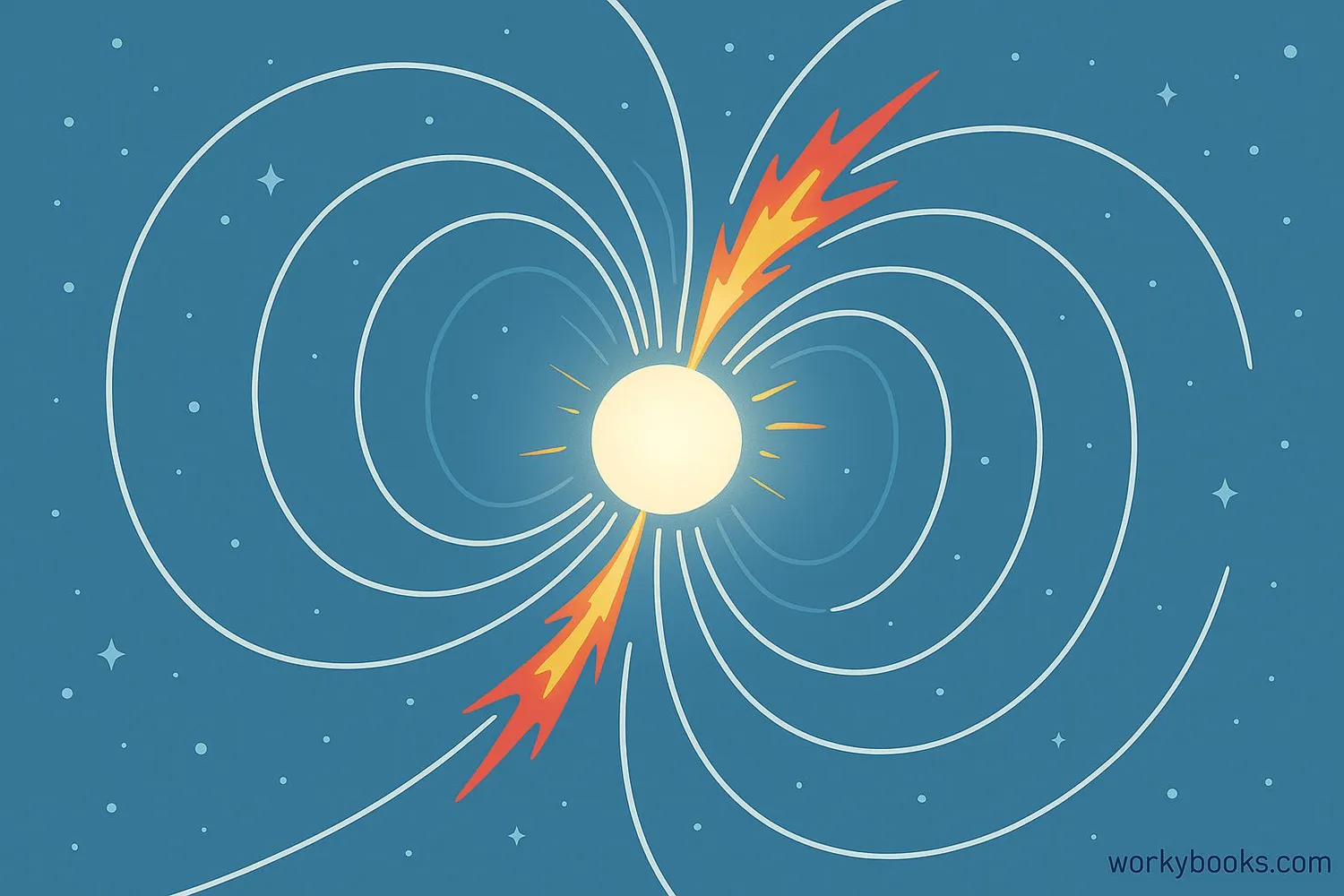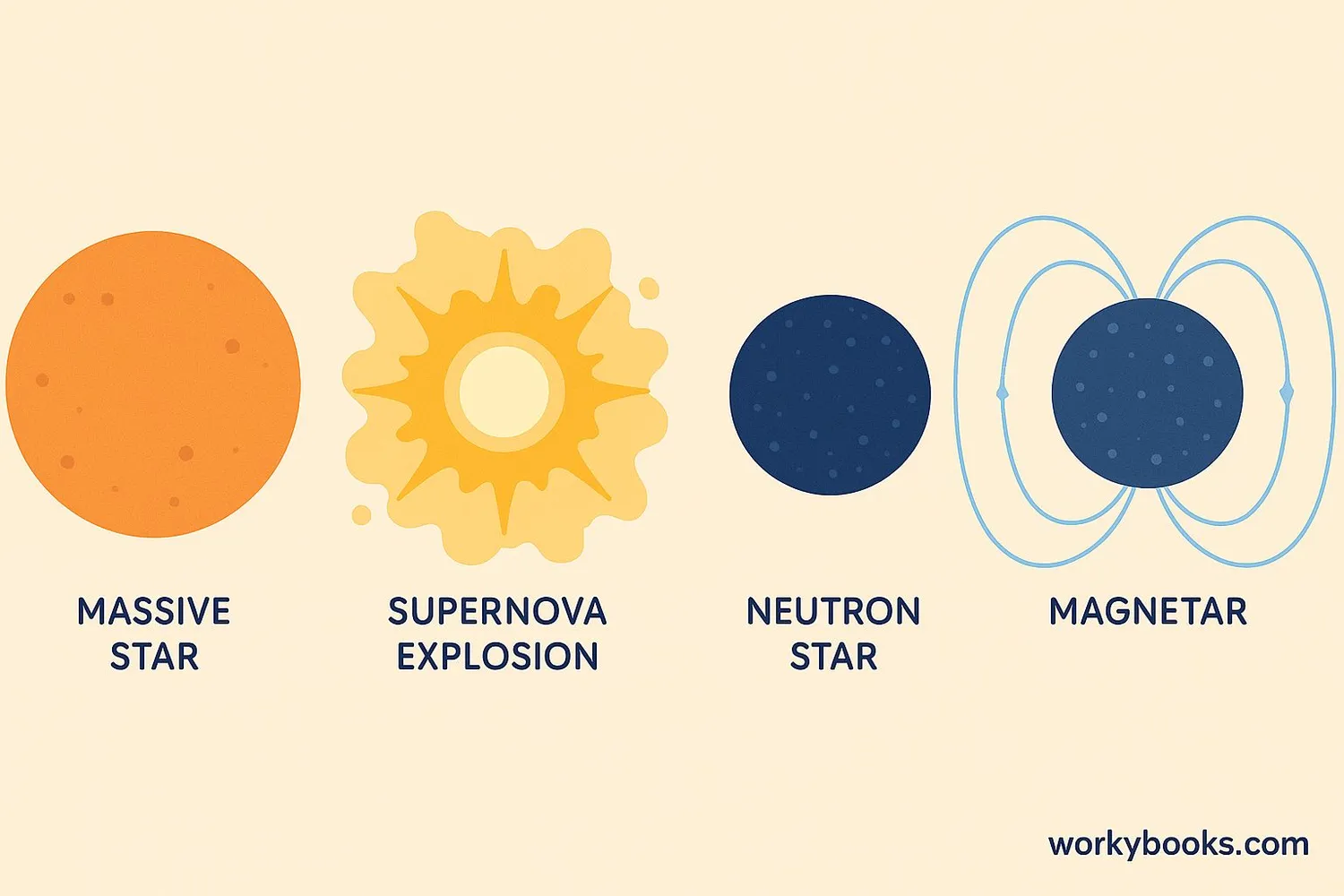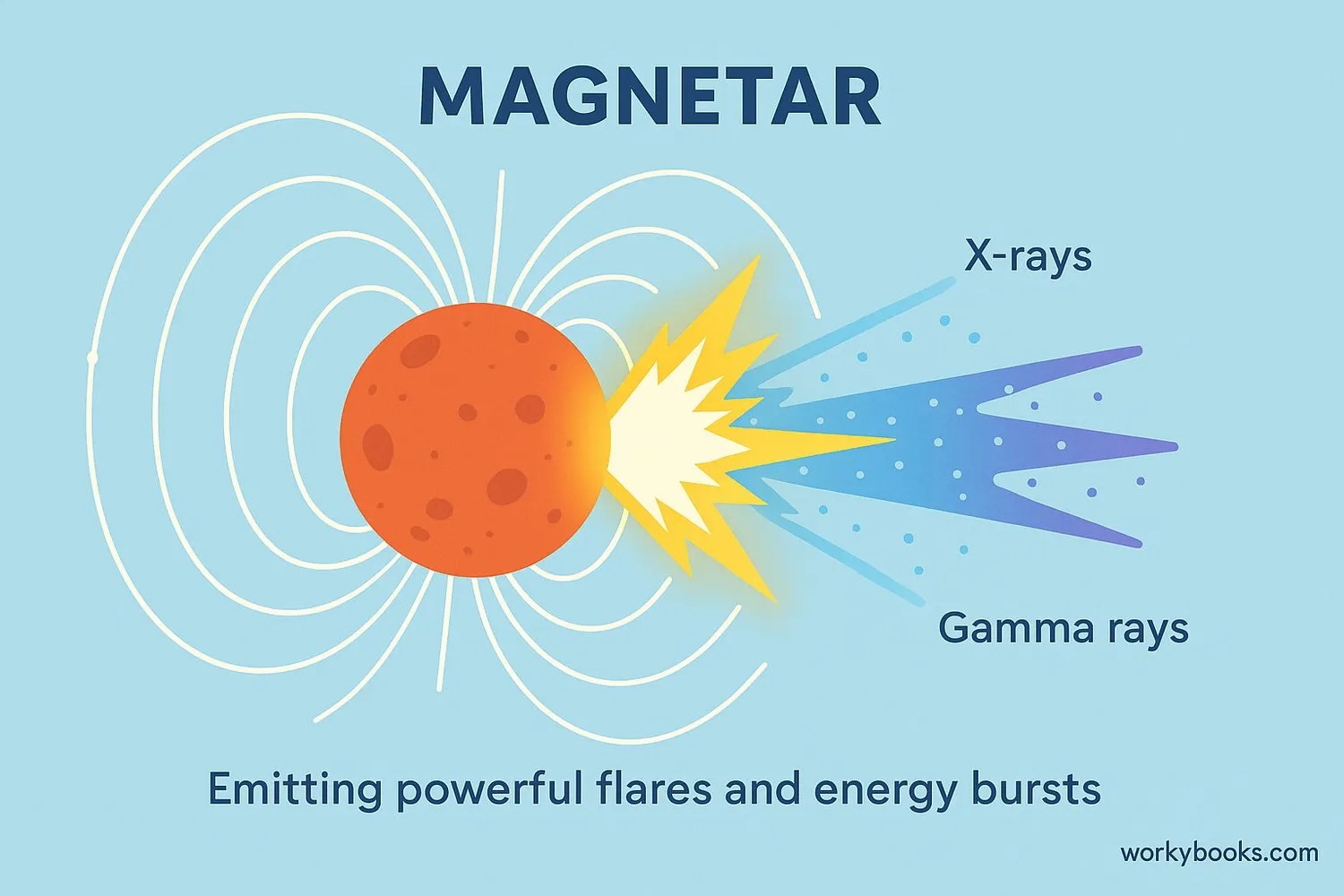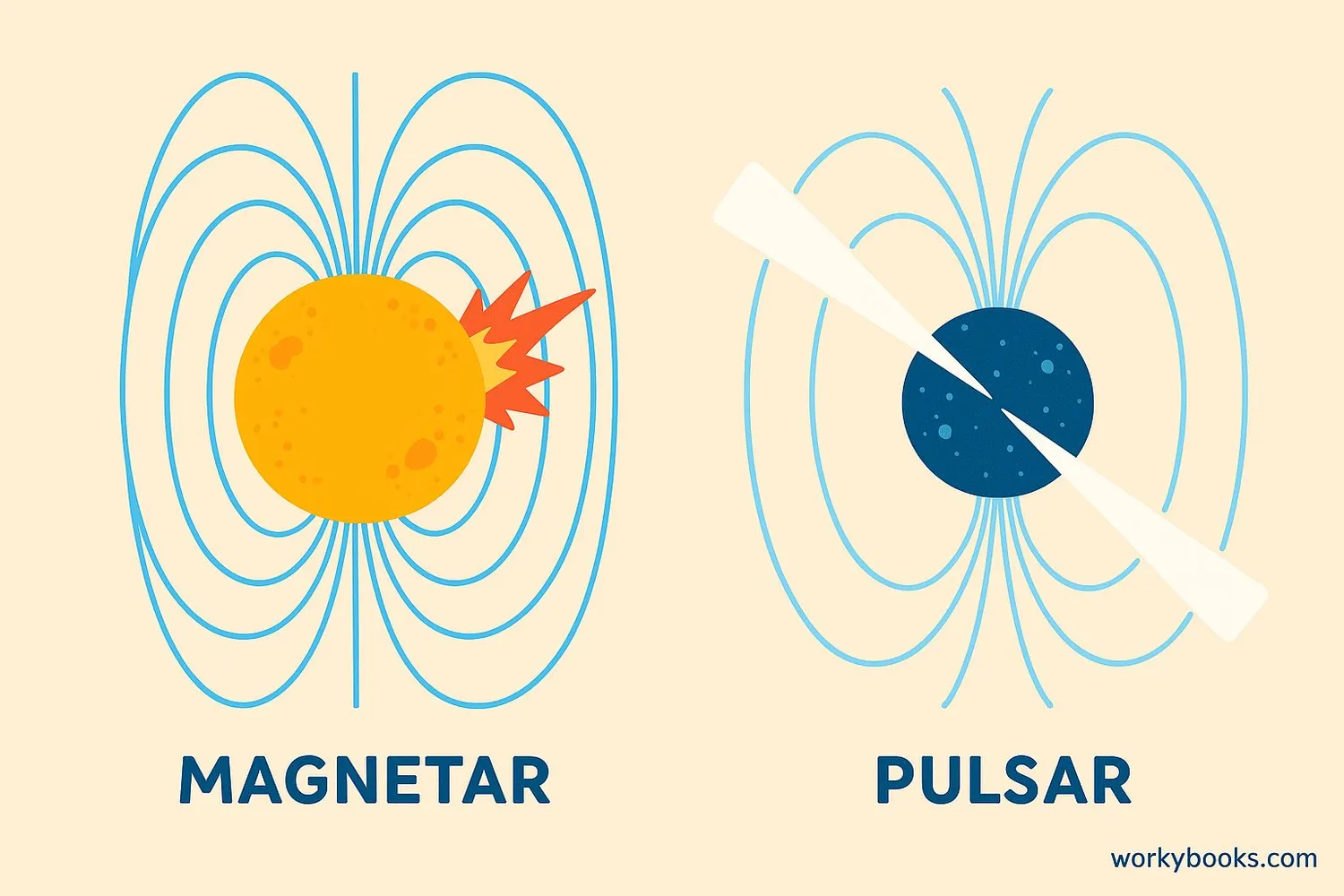Magnetars: Cosmic Powerhouses - Definition, Examples, Quiz, FAQ, Trivia
Discover the universe's strongest magnets that can affect things trillions of miles away!
What is a Magnetar?

A magnetar is a special type of neutron star with the most powerful magnetic field in the universe! Imagine a magnet so strong that it could pull the keys out of your pocket from thousands of miles away - a magnetar's magnetic field is a quadrillion (1,000,000,000,000,000) times stronger than Earth's!
Magnetars are formed when massive stars explode in supernovae. What's left behind is a super-dense object only about 12 miles across but containing more mass than our Sun! They're like cosmic power plants that generate enormous amounts of energy through their magnetic fields.
Space Fact!
If a magnetar were located at the distance of the Moon, it could strip the information from all credit cards on Earth!
How Magnetars Form

Magnetars have an incredible origin story! They form from the collapse of massive stars that are at least 8-10 times larger than our Sun. Here's how they come to be:
Massive Star
A star much larger than our Sun uses up its fuel
Supernova
The star explodes in a brilliant supernova
Core Collapse
The core collapses under its own gravity
Neutron Star
Forms an incredibly dense neutron star
Magnetic Field
Special conditions create the ultra-strong magnetic field
What makes magnetars special is how their magnetic fields form. During the supernova explosion, the collapsing star's magnetic field gets concentrated and amplified to incredible levels. The entire process takes just seconds, but creates a cosmic powerhouse that can last for thousands of years!
Density Fact!
A teaspoon of magnetar material would weigh about 100 million tons on Earth - that's like squeezing Mount Everest into a sugar cube!
Special Characteristics

Magnetars have some extraordinary features that make them unique in the universe:
Powerful Flares
They produce giant flares that release more energy in 0.1 seconds than the Sun does in 100,000 years!
Starquakes
"Starquakes" occur when the magnetar's crust cracks, releasing enormous energy bursts
Magnetic Field
Their magnetic field is so strong it distorts atoms into pencil-shaped forms
Magnetars are also known for producing mysterious signals called Fast Radio Bursts (FRBs) - powerful bursts of radio waves that last just milliseconds but contain as much energy as the Sun produces in days! Scientists are still studying how magnetars create these incredible signals.
Magnetars vs. Pulsars

Magnetars and pulsars are both types of neutron stars, but they have important differences:
| Feature | Magnetar | Pulsar |
|---|---|---|
| Magnetic Field | Ultra-powerful (up to 10¹⁵ Gauss) | Strong (10¹² Gauss) |
| Energy Source | Magnetic field decay | Rotation |
| Rotation Speed | Slower (2-12 seconds per rotation) | Faster (milliseconds to seconds) |
| Radiation | X-rays, gamma rays, occasional radio | Mostly radio waves |
| Special Events | Giant flares, starquakes | Steady pulses |
| Rarity | Very rare (about 10% of neutron stars) | More common |
While both are fascinating cosmic objects, magnetars have much more powerful magnetic fields and more dramatic behavior. Think of pulsars as cosmic lighthouses with steady beams, while magnetars are like cosmic lightning storms with unpredictable bursts of energy!
Magnetar Quiz
Test your knowledge about magnetars with this cosmic quiz! Answer all 5 questions to see how much you've learned.
Frequently Asked Questions
Here are answers to some common questions about magnetars:
Space Trivia: Magnetar Edition
Discover some amazing facts about magnetars!
Record Holder
The strongest magnetic field ever measured belongs to magnetar J1745-2900, near our galaxy's center. Its magnetic field is so powerful it could destroy a credit card from 100,000 miles away!
Slow Spinners
While pulsars spin incredibly fast (up to 700 times per second), magnetars rotate much slower - typically once every 2 to 12 seconds. The slowest known magnetar takes about 6.6 hours to complete one rotation!
The Great Flare
In 2004, a magnetar flare was so powerful that it temporarily compressed Earth's magnetic field and briefly ionized our upper atmosphere. This happened from 50,000 light-years away - halfway across our galaxy!
Strange Matter
Scientists think magnetars might contain "quark-gluon plasma" - a state of matter that hasn't existed naturally since the Big Bang! Studying magnetars helps us understand the fundamental building blocks of the universe.


